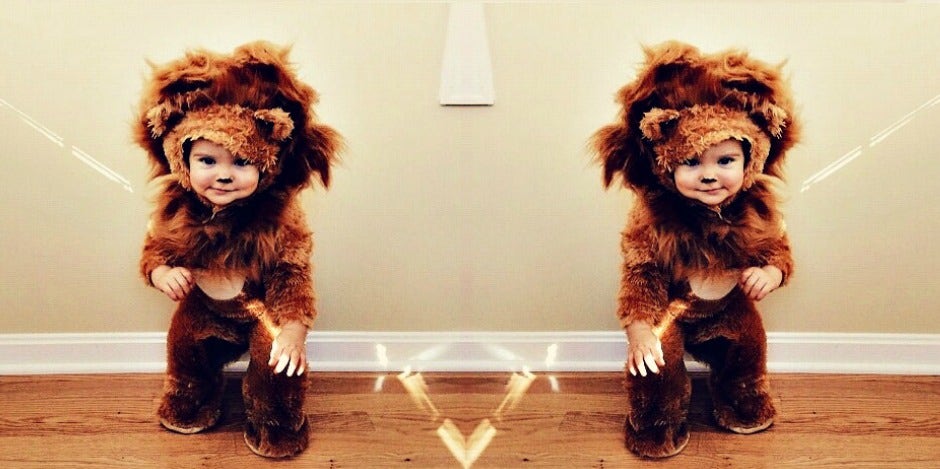8 Ways To Dial Down The Scary For Anxious Kids At Halloween
Holidays should be fun, not traumatizing.
 WeHeartIt
WeHeartIt Parenting anxious kids is hard enough without needing to worry about their future development of phobias, and yet Halloween’s focus on scary icons like ghosts, zombies, and spiders may just be the waiting catalyst for an anxious child to develop a lifetime of personal fears. Managing Halloween anxiety is a key part of taking care of sensitive children.
Chapman University just released a survey of 1500 people’s biggest fears. These personal fears and phobias can develop for a variety of reasons, but often result from early scary — even traumatic — experiences with unusual ambiguous stimuli in early childhood before they can fully understand the difference between fantasy and reality (usually by age 6). For example, many kids develop a fear of clowns having been exposed to their jarring antics before being able to understand that a clown is just a person in character.
For sensitive kids, their risk of being frightened is simply higher.
Here are some ways parents can ratchet down the scary and still keep Halloween comfortable and fun.
1. Know your child
If your child is sensitive, chances are your child is prone to fear reactions that you might not be able to predict. Also, sensitivity typically goes hand-in-hand with anxiety in children, and this means sensitive kids are sensitive to all emotions, and especially fear. With Halloween being a holiday that at its most basic level celebrates death, and our deepest fears about it, it will help to orient your young child to what it’s all about, and that it is pretend.
2. Choose happy, emotionally-neutral costumes over scary ones.
Sensitive kids will enjoy dressing up in costumes they understand and can relate to. Make the costume deciding fun by letting your child take the lead on it and participate in the buying or making of the costume.
3. Have your child's costume ready in advance.
Do this so he or she can practice playing with it and becoming familiar with dressing up. The more comfortable they are in their costume, the more comfortable they will be experiencing others.
4. Avoid masks
These can be the most disorienting things to young and sensitive children who rely heavily on nonverbal facial cues to regulate themselves emotionally. The masks scare some children to the point that some primary schools forbid them from school-sponsored events.
5. Prioritize sleep
Make sure your child gets to bed on time for the couple of nights before Halloween so that he is well-rested. Rest helps everything go better, especially when it comes to processing new information, managing emotions, and decreasing anxiety.
6. Trick or treat in daylight
Do this so your child is not over stimulated by the darkness. When darkness falls, let your child continue to participate by handing out candy to neighboring children from the safety of your familiar and well-lit home.
7. Don't avoid Halloween altogether
If your sensitive child doesn’t want to dress up or participate in Halloween, understand that avoidance can strengthen rather than diminish their fears over time. Phobias are in large part reinforced through avoidance. Talk this through with your child and work towards a creative compromise that allows them to feel in control but also participate. Children who choose to avoid the activity can feel left out, more afraid of the activity and thus even more sensitive.
8. Watch your child's reactions carefully
Do not dismiss frightened tears as silly or irrational. Remember, children do not make up their feelings, and they need our help to sort through their powerful emotions. If your child suddenly becomes scared of something, stop what you’re doing, get down on his or her level, and listen to what is scaring them. Make sure to reflect back how you understand their fears, before explaining why they don't have to be afraid. There is a difference between telling a child not to be afraid, and explaining why they don't need to be afraid.
Sensitive children feel things at a higher volume than others, and often need our help understanding and processing their environment. Imaginary ghosts, pretend spiders, and scary masks can all be a part of this iconic holiday’s purpose of facing down our fears through play. At its best, kids learn that they can tolerate and even find fun in being scared, while at the same time knowing they are safe. This can be an important part of finding confidence amidst anxiety, and teaching kids that they can handle situations that are unfamiliar, surprising, and even disorienting. Especially for our sensitive and anxious children.
